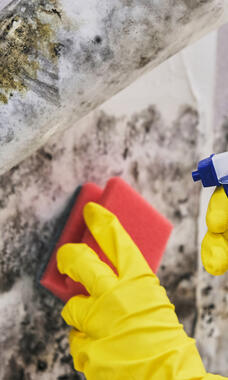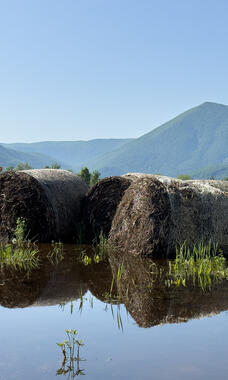What You Need to Know About Radon in Drinking Water Radon is a naturally occurring radioactive gas. Radon may be present in both soil and water. Soil is the most common source of radon in your home. Well water that...
Health Department Resources and Guidance for Safe Flood Recovery
For Immediate Release: July 12, 2024 Media Contact: Ben Truman │ Department of Health 802-316-2117...
Sodium and Chloride in Drinking Water
What You Need to Know About Sodium and Chloride in Drinking Water Both sodium and...
How to Test Your Drinking Water
If you get your drinking water from a private well or spring, you should have...
How to Treat Your Drinking Water
If your drinking water test results show your water is contaminated, you’ll need to treat...
New Drilled Well Testing: What You Need to Know
Vermont law requires water to be tested when a new groundwater drinking source is installed...
Lead in Drinking Water at Schools and Child Care Facilities
Act 66, passed in 2019, requires all Vermont school and child care providers to test...
How to Test for Lead in Drinking Water at Your School or Child Care Facility
Vermont law requires all schools and licensed or registered child care facilities to test their...
Drought and Your Well
Drought can cause groundwater levels to lower and could cause your drinking water source to...
Stay Safe in a Flood
Vermont’s rivers, streams and lakes can be harmful to our health and safety when they...

Copper in Drinking Water
What You Need to Know About Copper in Drinking Water Copper is an essential nutrient...
Hydrogen Sulfide in Drinking Water
What You Need to Know About Hydrogen Sulfide in Drinking Water Hydrogen sulfide gas can...
Radon in Drinking Water
What You Need to Know About Radon in Drinking Water Radon is a naturally occurring...
Hardness in Drinking Water
What You Need to Know About Hardness in Drinking Water Water described as “hard” contains...
Arsenic in Drinking Water
Arsenic is a natural element found in some rocks and soils in Vermont and may...
TFM (Lampricide) Application 2016
The Health Department protects health by making recommendations to the Department of Environmental Conservation about...
PFOA in Drinking Water 2016
The Vermont Department of Health worked with the Department of Environmental Conservation to respond to...
Atlases and Dashboards
Explore Health Data Atlases and Dashboards Many Vermont public health map atlases and dashboard-styled reports...
Safe Home Environment
Injuries, accidents and poisonings are common in homes. Taking precautions can help prevent them from...
Drinking Water
Private water supplies are monitored and maintained by their owners, so it is important for...
Gross Alpha Radiation, Uranium and Radium in Drinking Water
Gross alpha radiation is a type of energy released when certain radioactive elements decay or...
Nitrates and Nitrites in Drinking Water
What You Need to Know About Nitrates and Nitrites in Drinking Water Nitrogen can take...
Manganese in Drinking Water
What You Need to Know About Manganese in Drinking Water Manganese is a metal found...
Organic Chemicals in Drinking Water including Pesticides and Petrochemicals
Pesticides, petrochemicals and other organic chemicals are human-made and do not occur naturally in drinking...
Perfluoroalkyl and Polyfluoroalkyl Substances (PFAS) in Drinking Water
PFAS, including PFOA (perfluorooctanoic acid) and PFOS (perfluorooctane sulfonic acid) are manufactured chemicals that stay...
Monochloramines and Disinfection Byproducts in Drinking Water
The Environmental Protection Agency (EPA) requires that public water systems use chlorine for disinfection at...
Coliform Bacteria in Drinking Water
What You Need to Know About Coliform Bacteria in Drinking Water Coliform bacteria are one...
After a Flood: Private Drinking Water Guidance
Any flood or major rainstorm that generates significant runoff could contaminate your water supply making...

How to Disinfect Your Drinking Water
Water contaminated with bacteria can make you sick. Learn how to disinfect your water before...
Public Drinking Water
Public drinking water systems are regulated by the Vermont Department of Environmental Conservation. However, the...
Private Drinking Water
Learn how to make sure your well or spring is properly constructed and maintained to...
Prevention
Cancer develops gradually as a result of many different factors related to lifestyle choices, environment...
Injuries, accidents and poisonings are common in homes. Taking precautions can help prevent them from happening in your home and help to keep yourself and your family safe.
What You Need to Know About Sodium and Chloride in Drinking Water Both sodium and chloride are found naturally in the Earth’s crust, which means they can be found in your well or spring water. However, high levels of sodium...
Vermont’s rivers, streams and lakes can be harmful to our health and safety when they flood. Learn about the steps you can take to stay safe before, during and after a flood.
The Health Department protects health by making recommendations to the Department of Environmental Conservation about chemicals in drinking water. In 2016, two things triggered a change in thinking about the application of TFM (lampricide) to the LaPlatte River.
